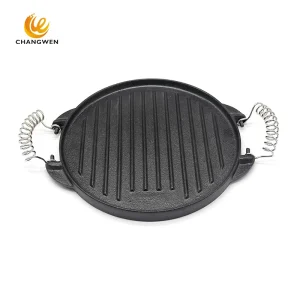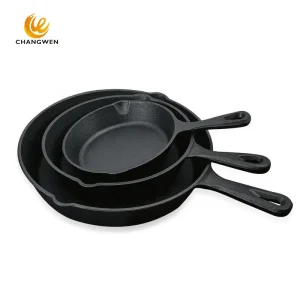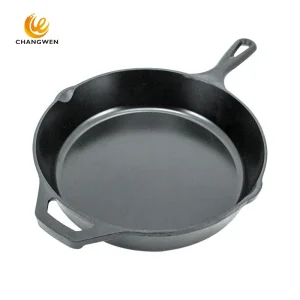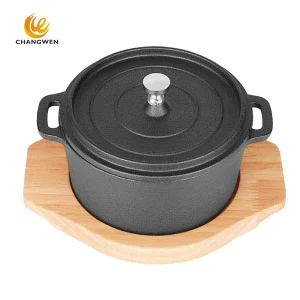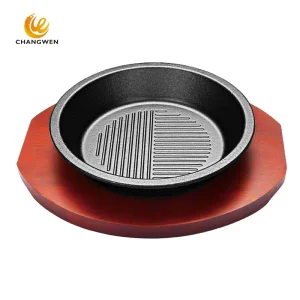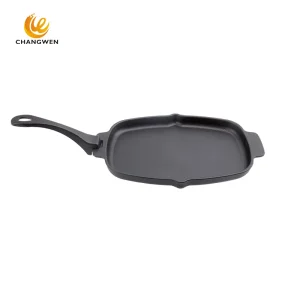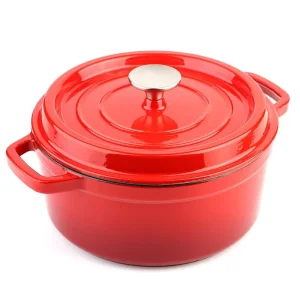Cast Iron Cookware Manufacturer
Changwen cast iron cookware is strong and durable, it can withstand high temperatures and long-lasting use, and is not prone to deformation or wear.
Home > Cast Iron Cookware
Changwen Cast Iron Cookware
Through technological innovation, Changwen cast iron cookware are less likely to stick to the pan without coating, meeting the needs of health and environmental protection. Create a non-toxic, long-lasting, durable frying pan. It remains perfectly stable on any type of stove for many years and tolerates all types of food while minimizing fumes.
17″ 20″ Round Cast Iron Grill Griddle CW-CI001
3pcs Cast Iron Frying Pan Set Non Stick Skillet CW-CI005
Best whole cast iron kitchen cooking ware non stick skillet frying pans CW-CI18
Camping Cast Iron Potjie Pot With Three Legs CW-CI25
Cast Iron Pot With Wooden Base CW-CI008
Cast Iron Sizzling Plate With Wooden Base Manufacturer CW-CI010
Egg-Shape Cast Iron Frypan With Detachable Handle CW-CI011
Enamel cast iron skillet color soup pot dutch oven enameled cast iron cookware
Why Choose Changwen Cast Iron Cookware?
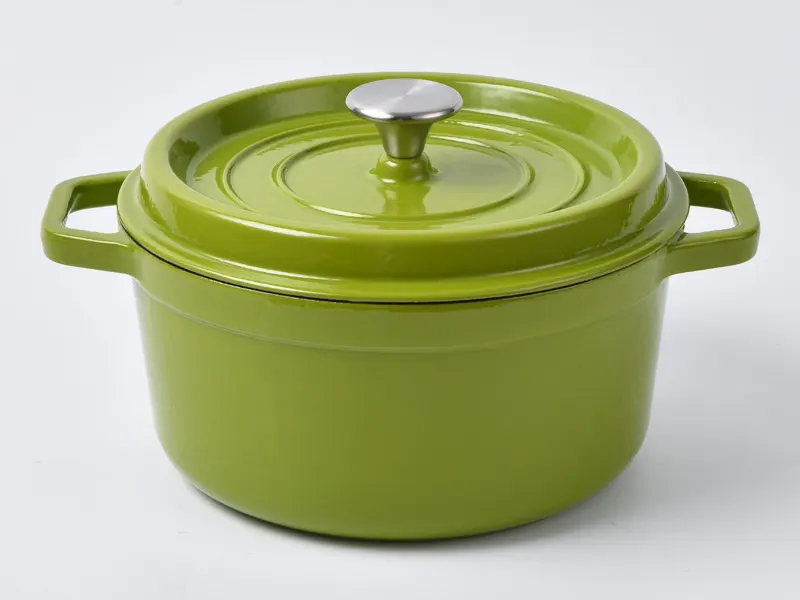
- Superior Quality and Craftsmanship, from material selection, smelting, hammering to grinding, quenching and polishing, every aspect is strived for excellence to ensure that every pot reaches the highest quality standards.
- The body of the Changwen pot is made of virgin cast iron, which can absorb excess fat in food. It also has excellent thermal conductivity and even heating characteristics, which greatly saves cooking time.
Meet Changwen Cast Iron Cookware
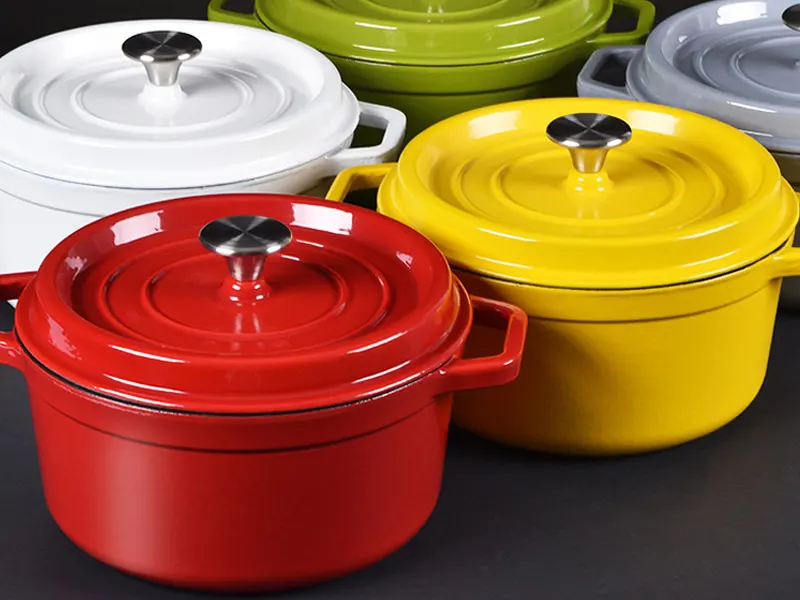
Enamel Cast Iron Cookware
Enameled cast iron cookware combines the excellent heat retention and even cooking properties of traditional cast iron with the convenience and beauty of an enamel coating. Changwen offers a range of colorful enameled cast iron cookware that’s built to last. Colored enamel, delicate and full color, high-end texture, one-piece pot body, thick and solid. It conducts heat evenly and maintains heat for a long time. It is suitable for slow stewing over low heat to fully release the delicious taste of ingredients. Suitable for frying, frying, stewing, braising, roasting, simmering, baking and other cooking.
Vegetable Oil Cast Iron Cookware
The vegetable oil cast iron cookware is coated with natural vegetable oil, which not only does not release substances harmful to the human body, but also retains the unique texture and cooking characteristics of the cast iron pan. Food exhibits better taste and nutrition when cooked in the cast iron pan.
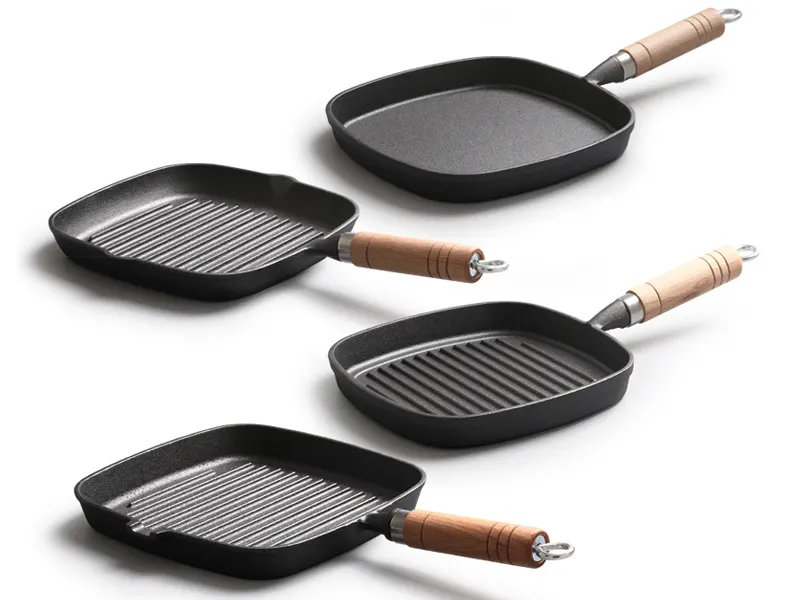
How Cast Iron Cookware Manufactured
Changwen’s cast iron cookware are made of high-quality Pig iron raw materials and pay attention to every detail during the manufacturing process to achieve excellent product quality. Continuous innovation while ensuring quality to provide you with high-quality cast iron cookware with rich functions.
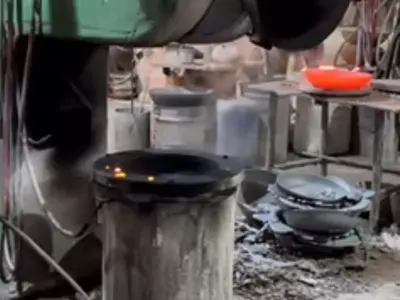
Mould
The pattern is pressed into fine, high-quality sand mixed with a bonding agent to create a negative impression, which forms the mold for the cast iron.
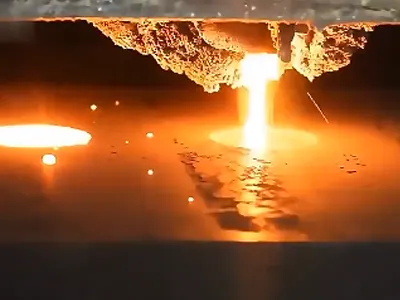
Casting
Iron, along with alloying elements like carbon and silicon, is melted in a furnace at very high temperatures. The molten iron is poured into the prepared sand molds.

Raw Castings
After the iron has cooled and hardened, the sand mold is broken apart to release the new cast iron pot.
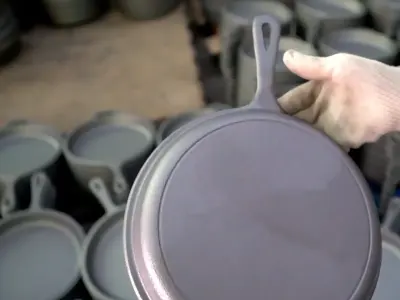
Purification
Removing Excess Material. The cast iron pot will typically have excess material such as gates, risers, or flashing that are removed at this point.
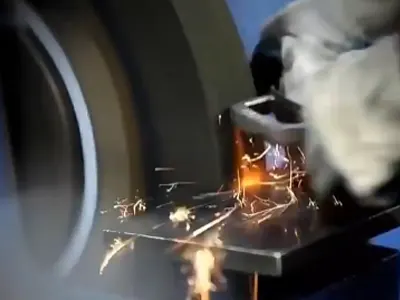
Polshing
Polish the pot surface to create a smooth surface.
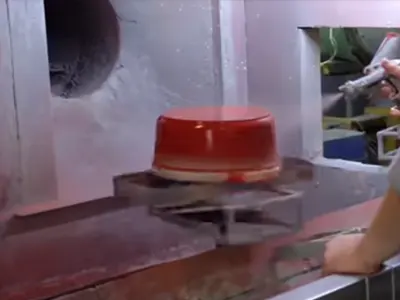
Enamel Spraying
Apply enamel glaze to cookware surfaces by spraying.
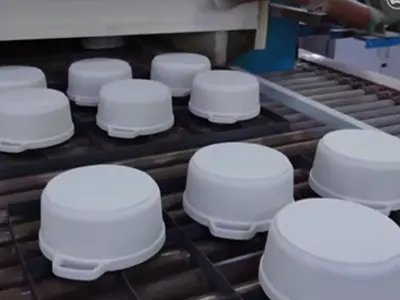
Heating
Heat treated to eliminate internal stress and improve durability.

Pre-seasoning
The cookware is coated with a thin layer of oil and baked in an oven at a high temperature to create a natural, protective non-stick layer.
Cast Iron Cookware FAQ
Seasoning cast iron involves coating it with a thin layer of oil and baking it at a high temperature to create a non-stick surface. Wash and dry your pan, spread a thin layer of vegetable oil or shortening over the surface, and bake it upside down in a preheated oven at 375-400°F (190-204°C) for an hour. Allow it to cool in the oven.
It’s not recommended to put cast iron cookware in the dishwasher. The harsh detergents and soaking can strip the seasoning off your cookware. It’s best to wash cast iron by hand with warm water and, if necessary, a small amount of soap.
Rust is not dangerous, but it can make food taste metallic and can continue to degrade the cookware if not treated. Rust can typically be removed with a little bit of steel wool or a stiff brush and then re-season the cookware after drying it completely.
Cooking highly acidic foods like tomatoes in newly seasoned cast iron can strip the seasoning due to the acids reacting with the iron. Once your cookware is well-seasoned through multiple uses, this becomes less of a problem. For fresh seasoning, limit the cooking time for acidic foods.
A sticky surface usually indicates excess oil was left on the pan during the seasoning process. To fix this, bake the cookware for longer or at a higher temperature to fully polymerize the oil. Ensure to use a very thin layer of oil when seasoning.
Store your cast iron in a dry place. If stacking pans, place a paper towel between them to absorb moisture and prevent scratches. Ensure they’re fully dry to prevent rust formation.
Food sticking can be due to insufficient seasoning or the pan not being adequately preheated. Ensure your pan has a good layer of seasoning, and always preheat it before adding food for the best non-stick performance.
Wash and scrub the cookware to remove rust and debris. Dry thoroughly, apply a thin coat of oil, and bake upside down in the oven at 375-400°F (190-204°C) for an hour. Allow it to cool in the oven. Repeat as necessary.
Beyond avoiding prolonged cooking of acidic foods in a freshly-seasoned pan, cast iron is versatile. However, cooking strong-smelling foods (e.g., fish) might leave lingering odors that could transfer to other foods. Regular cleaning and maintenance mitigate this issue.
Yes, metal utensils can be used on cast iron, but be mindful not to gouge or scrape the pan aggressively. Wooden, silicone, or plastic utensils are gentler on the pan’s seasoning, especially for newer cookware.
Get a cookware catalog?
WE’RE HERE TO HELP. 24 HOURS A DAY, 7 DAYS A WEEK.


